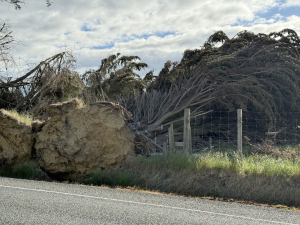“Urea is a non-toxic compound that animals produce to get rid of surplus ammonia and having urea in cow’s milk is perfectly natural,” says Dairy NZ senior scientist Jane Kay.
The levy-body put out a media release prior to Christmas claiming “there is conflicting information flooding the industry” on what milk urea (MU) values mean.
Kay’s colleague John Roche, Dairy NZ’s principal scientist, animal science, told Rural News it was prompted by some individuals saying high MU is associated with low milk protein and low milk fat, and referring to a New Zealand Society of Animal Production paper to support their argument.
“Having reviewed this paper, it shows a poor standard of reviewing. The analysis and interpretation are of questionable scientific quality and there is no way you can draw that inference from the data.”
He also rubbishes suggestions high MU is associated with poor reproduction.
“Let me be very clear, there is no evidence that a high MU is in anyway detrimental to cow production, health or reproduction.”
If milk urea readings are low, Roche says it may be worth having feeds analysed to determine if protein is limiting, but he warns against jumping to that conclusion without doing the analysis. And before doing the analysis, ask yourself what you’ll do with that information, he advises.
“Will I put in more protein? If so, what? What is the cost-benefit of this?”
Kay echoes Roche’s comments, stressing MU is only an indicator of dietary protein and not a sensitive measure.
“This is particularly true when dietary protein exceeds 20%, as often occurs in pasture.
“When cows are grazing spring pasture, MU levels can be greater than 50 milligrams per decilitre (mg/dl) and, contrary to advice being given to New Zealand farmers, high MU concentrations are not detrimental to milk production, cow health or fertility.”
Environmental arguments that high MU is bad also need to be kept in perspective. Although MU values are associated with urinary N loading, lowering the MU value will not necessarily reduce environmental N loading. Other management factors, such as stocking rate, pasture utilisation, effluent management and nitrogen fertiliser have a much larger impact.
“Our point is that to reduce MU and at least maintain profitability, stocking rate would have to increase to ensure pasture utilisation is maintained,” explains Roche.
“In this system more, not less, nitrogen is generally imported and is excreted in urine. The system implications of low N feeds are far more complex than reducing MU/cow!”
Any improvement in nitrogen use efficiency through feeding a low nitrogen feed like barley or maize is through removing N from the feed and not through greater capture of N as is often stated by ‘nutrition experts’, he adds.
Nitrogen losses in growing the feed used to lower the dietary N loading, not to mention the greenhouse gases released by machinery used in the growing of it, should also be taken into account, he argues.

















